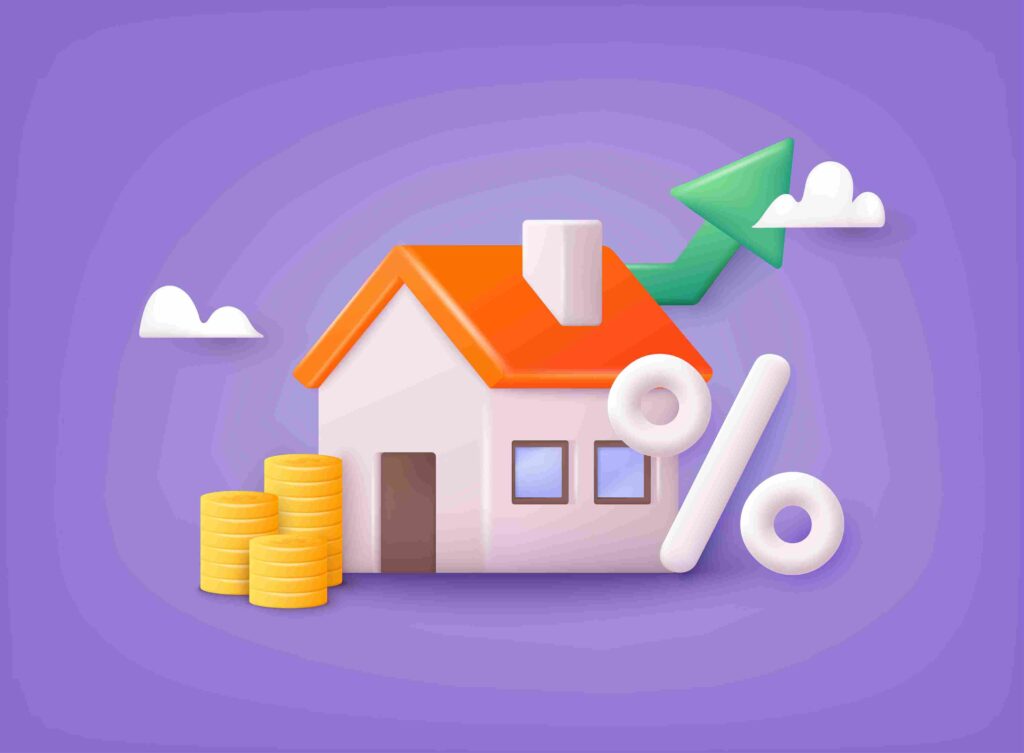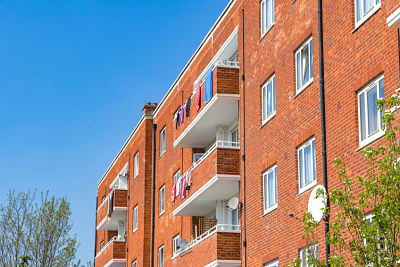
Want to increase your property investment returns? Learn how to calculate rental yields and identify high-yielding properties to boost your rental income.
Successful landlords don’t just stumble upon high-yielding rental properties. These savvy investors have become adept at identifying the most profitable locations and properties to invest in using precise calculations and in-depth market analysis.
While it may seem daunting, learning what to look for and how to calculate rental yield can significantly improve the profitability of your buy-to-let venture.
Ready to find out more? This article explains how to calculate rental yield and offers tips and advice for identifying the highest-yielding investment properties to boost your rental income.
What is rental yield?
Understanding rental yield is crucial if you want to maximise your profits as a buy-to-let landlord.
A property’s rental yield is measured as a percentage of the property’s value and represents the potential returns you could make on the property through rental income.
Rental yield can be expressed in two different ways: gross rental yield and net rental yield.
Gross rental yield is calculated before expenses are deducted, whereas net rental yield also factors in additional costs for maintaining and managing the rental property.
How to calculate a property’s rental yield
Now that we know what rental yield is, it’s time to learn how to calculate it yourself. This quick calculation will give you an idea of how good an investment opportunity is. It can also be a useful tool when comparing multiple properties, helping you to make an informed decision about which property is the smarter investment.
The calculations for a property’s gross rental yield and net rental yield are very similar, though calculating the net rental yield involves an additional step to account for costs. While the net rental yield can be a more accurate measure of a property’s potential profitability, accurately estimating the associated costs can be challenging.
Calculating a property’s gross rental yield
To calculate a property’s gross rental yield, first, divide the property’s total annual rental income by the property purchase price or current value, and then multiply the answer by 100 to get the rental yield as a percentage.
Calculating a property’s net rental yield
To calculate a property’s net rental yield, first, subtract your annual costs from your annual rental income. Then, divide that figure by the property’s purchase price or current value. Finally, multiply the answer by 100 to get the rental yield as a percentage.
What’s the difference between rental yield and return on investment (ROI)?
Rental yield and return on investment are both important metrics that can be used to measure a property’s profitability.
Rental yield measures return on investment each year based on initial costs as a percentage of the property’s value, while a property’s overall return on investment also incorporates any capital gains (the amount by which a property has increased in value over time).
Rental yield is usually used to measure a property’s potential profitability, while return on investment is usually used retrospectively to measure actual performance.
What defines a high-yielding property?
High-yielding rental properties offer a high return on investment. Most landlords aspire to own a high-yielding property.
Data from Zoopla shows that in 2024, the average gross rental yield in the UK is 5.60%. Gross yields have been slowly improving over the last year because property prices have fallen or stayed the same while rental rates have risen.
NatWest advises that rental yields around 5-6% are considered ‘good’, while anything above 6% is ‘very good’.
When determining whether a property is high-yielding and, therefore, worth investing in, three important factors must be considered:
- Rental yield – A property’s rental yield is the main indicator of how high-yielding it is. Generally, the higher the rental yield, the better the return on investment.
- Demand – Another important factor is the level of demand for rental properties where the property is located. High-yielding properties are often located in areas where demand for rental properties is high and supply is limited.
- Purchase price – The third factor to consider is how much the property costs to purchase relative to the rent you can realistically charge on it. High-yielding properties are often those that can be purchased at a low cost but command competitive rents.
If a property ticks all three boxes, it could be worth snapping it up quickly!
What are the benefits of investing in high-yielding properties?
Knowing how to identify high-yielding properties is key to boosting the success and profitability of your rental business. Investing in the wrong property could result in you barely turning a profit or, worse, struggling to cover your rental’s maintenance and repairs costs.
Investing in high-yielding properties can offer better financial security and peace of mind. Five key benefits of swotting up on what makes a high-yielding property include:
- Increased cash flow—High-yielding properties generate more rental income, which will help you cover your expenses more comfortably.
- Faster return on investment—A high rental yield also means you’ll see a return on your investment much quicker than you would with a lower-yielding property.
- Reduced risk—Although it’s impossible to mitigate risk completely when investing in property, high-yielding properties carry a lower risk and offer some buffer against market fluctuations and economic downturns.
- Potential for capital growth—Landlords managing high-yielding properties don’t just benefit from immediate returns; they are also more likely to benefit from capital growth.
- More investment opportunities—Landlords operating successful and profitable rental businesses with a healthy cash flow are more likely to have the capital to invest in new opportunities and expand their portfolio.
Landlords searching for investment opportunities can improve their profitability and financial stability by targeting high-yielding properties.
Market research to carry out when looking for high-yielding investment property
Before investing in or even viewing property, it’s important to carry out thorough market research. Property investment always comes with an element of risk. However, conducting thorough market research can help to minimise risk and increase your chances of scoring a profitable investment.
Let’s look at ten of the most important factors to consider when carrying out market research to identify the best location and property to invest in.
- Average rental yield — Investigate the typical rental yield within the area to get an idea of the potential rental income you could earn.
- Tenant demand — When demand is high, and supply is limited, landlords can usually demand higher rent rates, experience fewer void periods, and benefit from a more stable rental income.
- Location — Find out what local amenities and public transport are like. Properties near shops, schools, hospitals, and good public transport links usually have more appeal and are in higher demand.
- Future development plans—Do some digging and look for any future development or regeneration plans. These can enhance an area’s desirability and increase property values. Snapping up properties in up-and-coming areas can offer high capital appreciation over time.
- Potential for capital growth — Check out historical house sale data on websites like Rightmove to predict a property’s potential for future capital growth.
- Potential ongoing expenses — Consider whether a property is likely to require much renovation, repairs, or maintenance to get ready to let. It’s also important to consider how much the property is likely to cost in terms of ongoing maintenance and management expenses. These costs can significantly affect your net return.
- Employment opportunities — Properties in areas where there is a wealth of employment opportunities usually experience consistent rental demand.
- Crime rates — High crime rates can have a negative impact on property value and tenant retention.
- Environmental factors — Do your due diligence by checking for any environmental issues within the area. Areas known to be at risk of flooding or pollution can be less desirable and more expensive to insure.
- Local property market trends — Use historical data to analyse local property market trends, such as how long properties usually spend on the market, rental vacancy rates, and seasonal fluctuations in market activity.
Remember, it’s just as important to conduct extensive market research into specific locations as it is individual properties. Location is everything when it comes to property investment. It doesn’t matter how beautifully presented your property is; if it is in an undesirable location, you will struggle to maximise its profitability.
Where are the highest-yielding locations to invest in the UK in 2024?
Many landlords choose to invest in properties that are close to their own homes purely for practical reasons. Unless you are going to pay a letting agent or property management company to take care of the day-to-day running of your investment property, managing a long-distance buy-to-let can be a logistical nightmare. However, location is often said to be everything in the world of rental property, so unless you happen to already live in a high-yielding area, investing locally may not be the most financially savvy decision. Investing in locations where rental yields are above average can help you to maximise your return on investment.
The most lucrative locations for investing in property in the UK change according to the various market conditions and factors we discussed in the previous section. However, we’ve done a little research to find out where the most profitable areas to buy investment property are in 2024.
According to property experts Zoopla, the North East is the most profitable region of the UK to invest in, with an average gross yield of 7.65%, while London has the lowest gross yield, with an average of 4.93%.
The top ten cities with the highest rental yields in the UK in 2024, according to Zoopla are:
- Sunderland
- Aberdeen
- Burnley
- Dundee
- Glasgow
- Middlesborough
- Blackburn
- Hull
- Newcastle
- Liverpool
Each of these cities has an average gross yield of over 7%.
On the other end of the scale, the ten UK cities with the worst rental yields in 2024 are:
- Cambridge
- Oxford
- London
- Southend
- York
- Brighton
- Milton Keynes
- Crawley
- Aldershot
- Reading
There is a clear geographical split in rental yields across the country, with cities in the North generally enjoying higher returns than those in the South, where house prices are usually higher. Considering investment opportunities outside of your local area could significantly improve your return on investment if you can overcome the challenges of managing your rental property remotely.
As we’ve learned, successful property investment requires extensive research and strategic decision-making. Whether you’re a first-time landlord who’s anxious to make a smart first investment or an experienced investor who wants to improve their property portfolio’s profitability, it’s important to evaluate a property’s potential carefully before investing and stay informed about market changes. When armed with a strategy to help you find the highest-yielding properties, buy-to-let property investment can yield significant financial returns.



